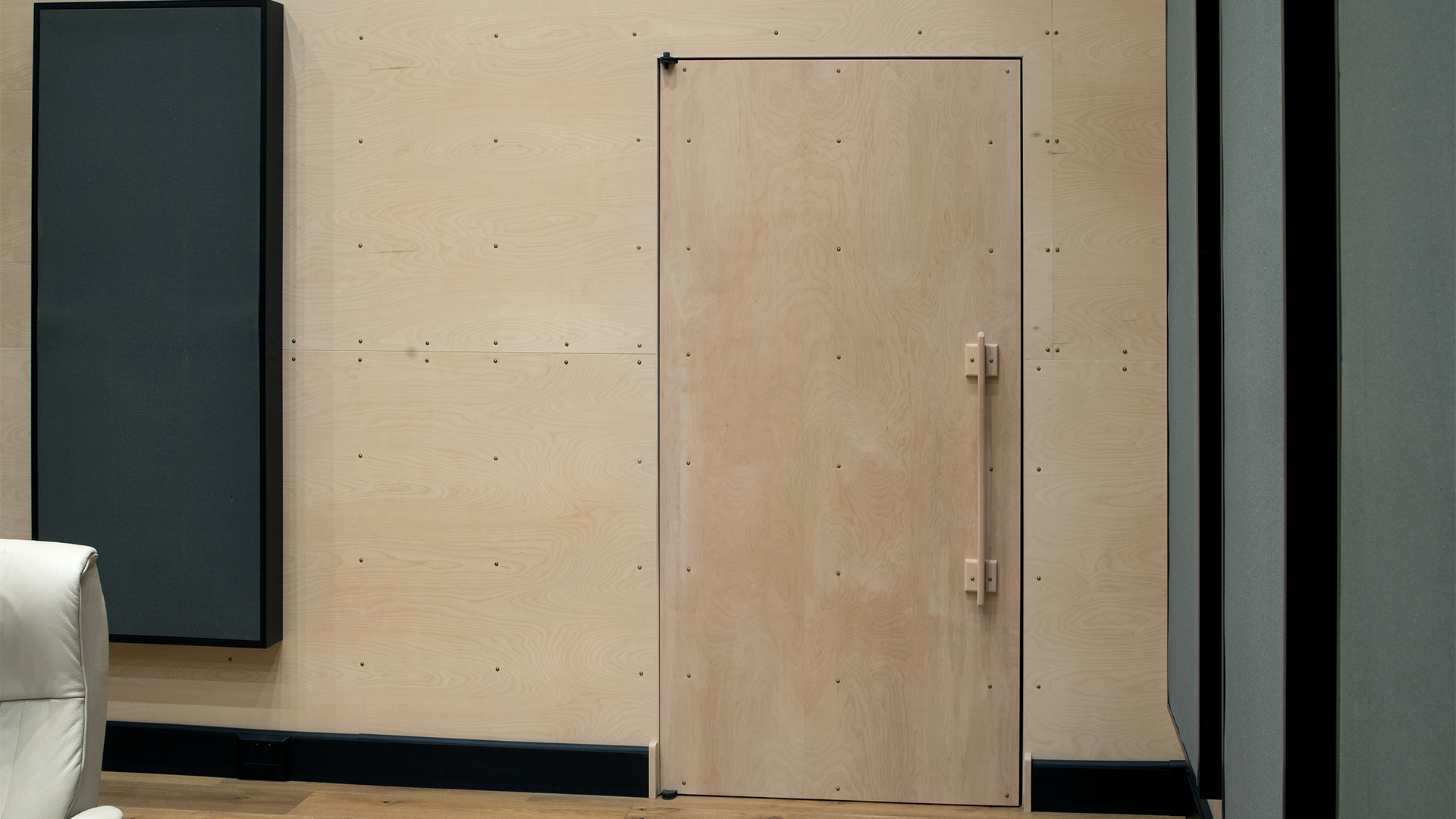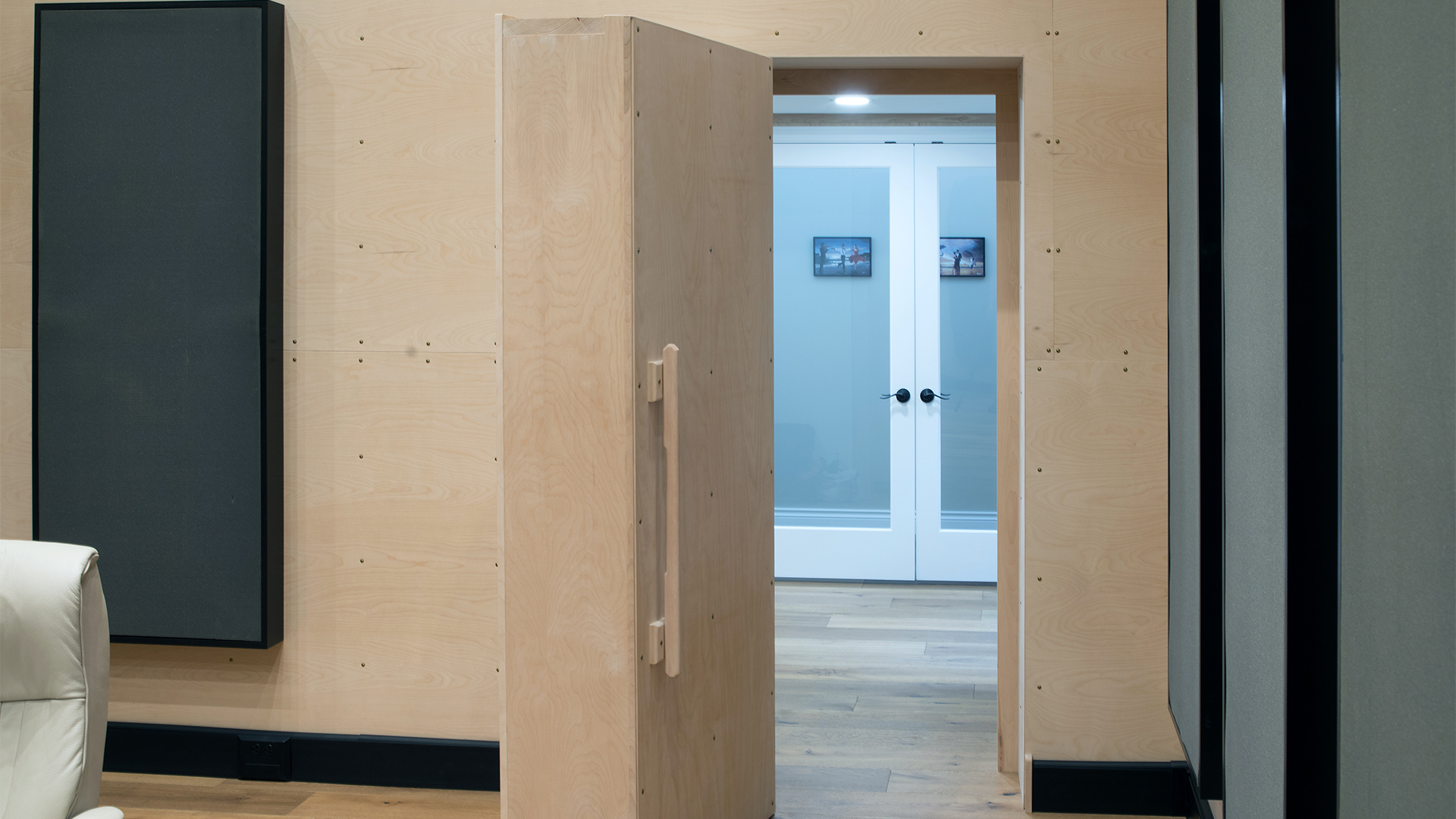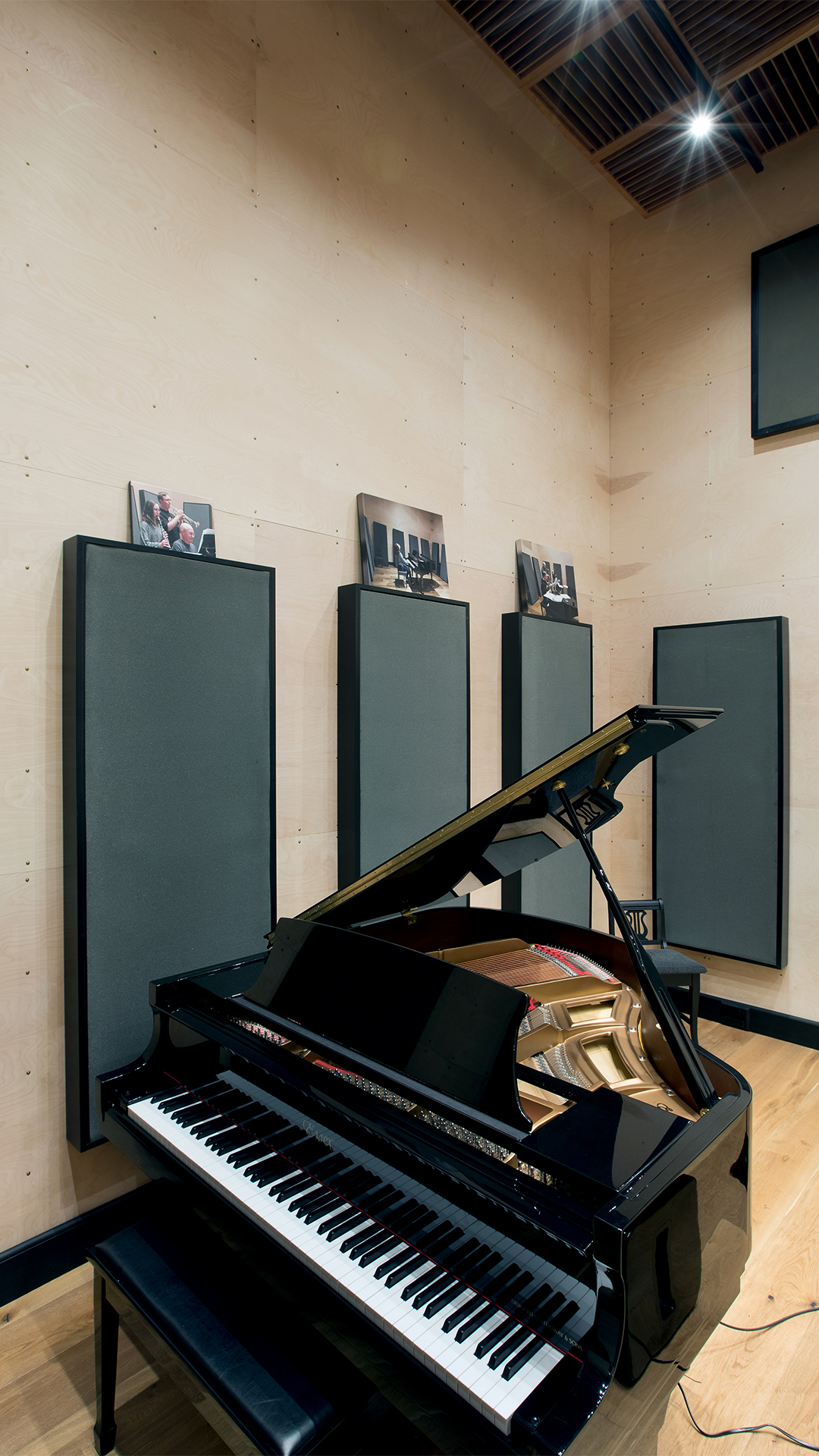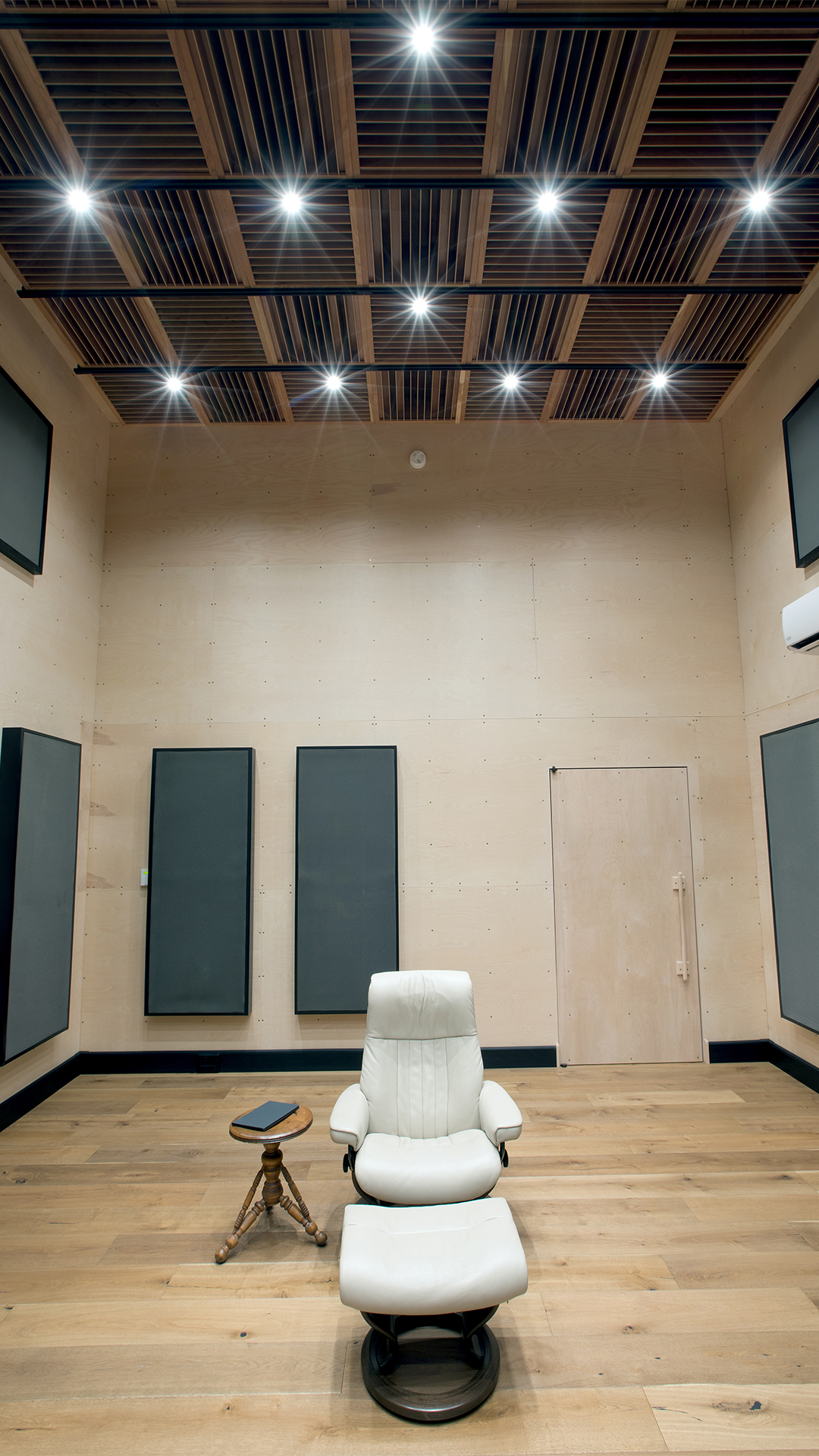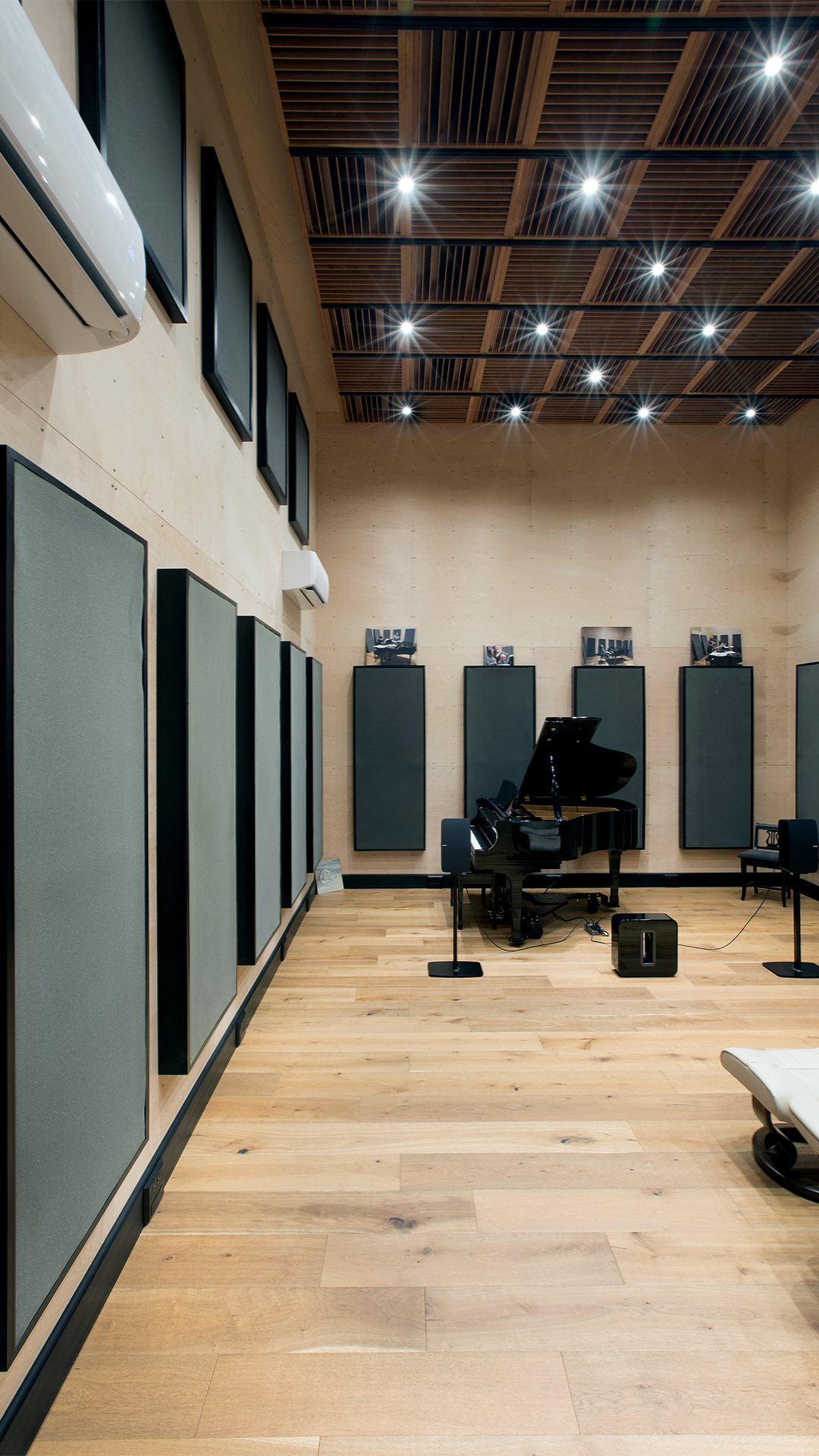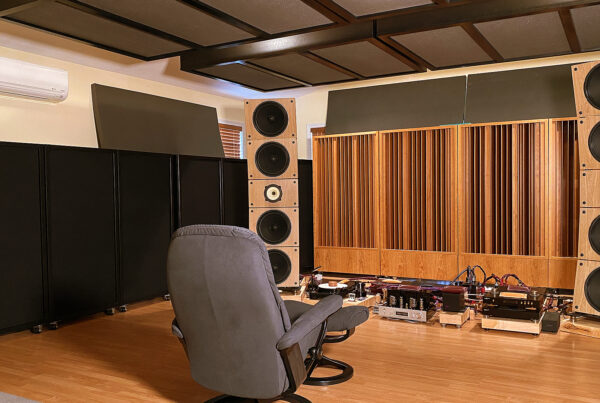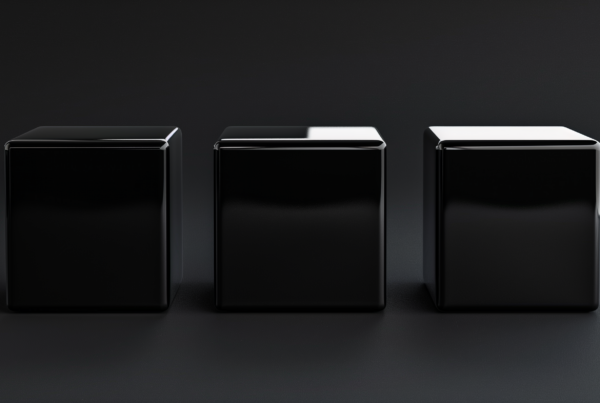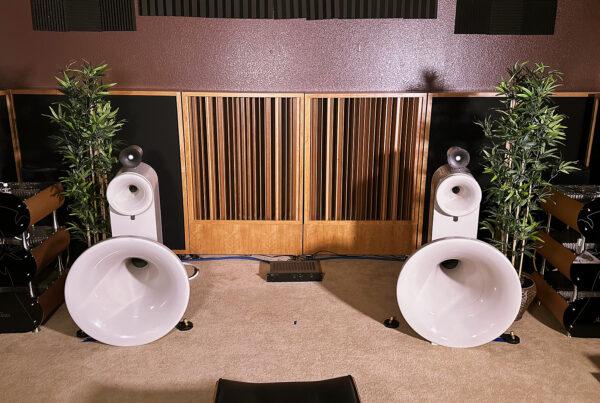Acoustic Design Project
Fred’s
Piano Room
Portage, USA
When we use the term dual usage, we usually are referring to a listening room inside a living room. A living room requires many things that a listening room would consider distortion. They do not get along well. A single use room is best for acoustical management. Sound energy is calculated as to the frequency range and amplitude the usage will require. The sound energy used was that from a piano.
CAW – Carbon Absorber Wall
We did not design this room for two channel sound playback. However, if you think about it, both a piano and a hi-fi system are full frequency range producing instruments. Special attention was paid to low-frequency management using the piano as our source. A piano is full range with a big low end sound. It is some of the most beautiful bass you can hear within a well treated room. We had room volume, good sidewall distances, and that ever so important ceiling height. We had the floor, four walls and ceiling to work with our carbon technology using our CAW between the studs system. The CAW was installed within the floor. You install the carbon filters between the studs, screw through the studs to secure and close up the frame. We now have the ultimate control over the low end with the floor, ceiling, and sidewalls all with our carbon diaphragmatic absorption process.
You have just turned your floor into a huge diaphragmatic absorber. With the in-floor heating system we had to zig and zag a bit around piping but all in all we were able to accomplish our goals and seal everything up. No air flow needed here. We are dealing with sound pressure, not molecular velocity. Carbon ran from floor to ceiling all the way around the room. The ceiling presented a load issue with the carbon filters and then the diffusers at 90 lbs. each. We had to use glue lams for additional support. No steel yet. I am waiting for the day when the load will get so great that we have to go to steel. Room is skinned in 3/4″ ply. With the ceiling, floor, and all four walls with carbon, you have a 90% resolution of all low frequency issues below 100 Hz. Let’s take a look at middle and high treatments.
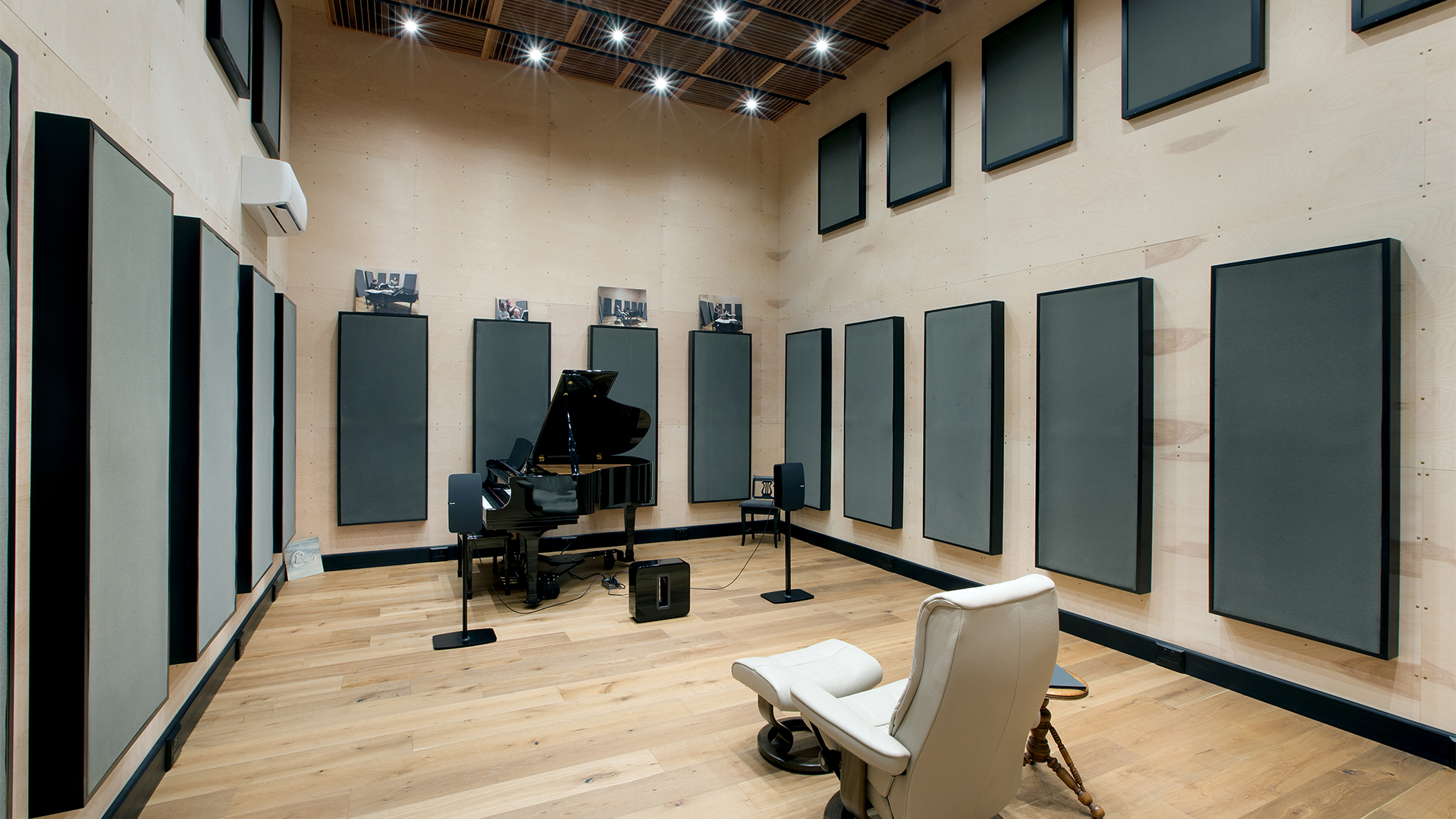
Acoustic Treatment
Reverberation times inside our rooms have increased. using plywood. We know that. With a wood skin, the room takes on its own reverberation time and sounds much different than drywall. It is more natural in its decay rates at frequencies above 250 Hz. It is more “organic”, so is our foam. Look at our foam absorption rates The absorption curves are smooth from 125 Hz. – 500 Hz. This is where the human voice starts and advances up through 2,000 hz. This frequency range must be linear and smooth. There can be no dips like the other products exhibit. Our next task is to decide what reverberation time to give the client. We had many discussions. However, I was not able to pin his preference down to a number. When this situation arises, we do the absorption treatment in phases.
We decided to treat the sidewalls first. As you can see they are around 4″ deep which is created by using two of our 2″ foam pieces. The sidewalls showed a different frequency and amplitude issue than the front and rear walls. When you increase the foam thickness, you lower the low end down below 100 Hz. Analysis showed that both of those surface areas needed that treatment type at that location. The front and rear short walls had the same issues but not at the lower end. They were more above 250 Hz. This end of the spectrum also warrants a deeper panel. In the top half of each wall, we used our 2″ deep foam to manage a much lower amplitude of the same frequency range issues. Diffusion is a technology that makes a small distance from diffuser to receiver(listener) sound much larger.
StudioPro Foam Technology
When you want music and voice to sound their best, you can’t rely on ordinary insulation that’s intended for temperature regulation. Cheap acoustic foam won’t work either. Both these options may be cheap but they’re ineffective at capturing the full human vocal range. When you have a recording studio, a church sanctuary, or some other place that relies on sound quality, you need to invest in sound quality.
To maximize musicality from the voice and music, you need special absorption curves that have a smooth, linear response. No technology on the market does this better than the StudioPro Acoustic Foam from Acoustic Fields. Our absorption curve absorbs vocals and sounds gradually for the smoothest results.
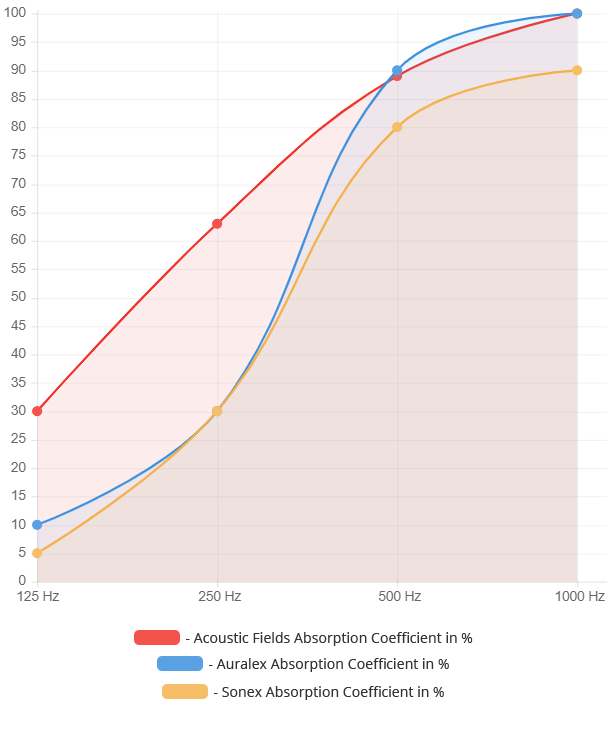
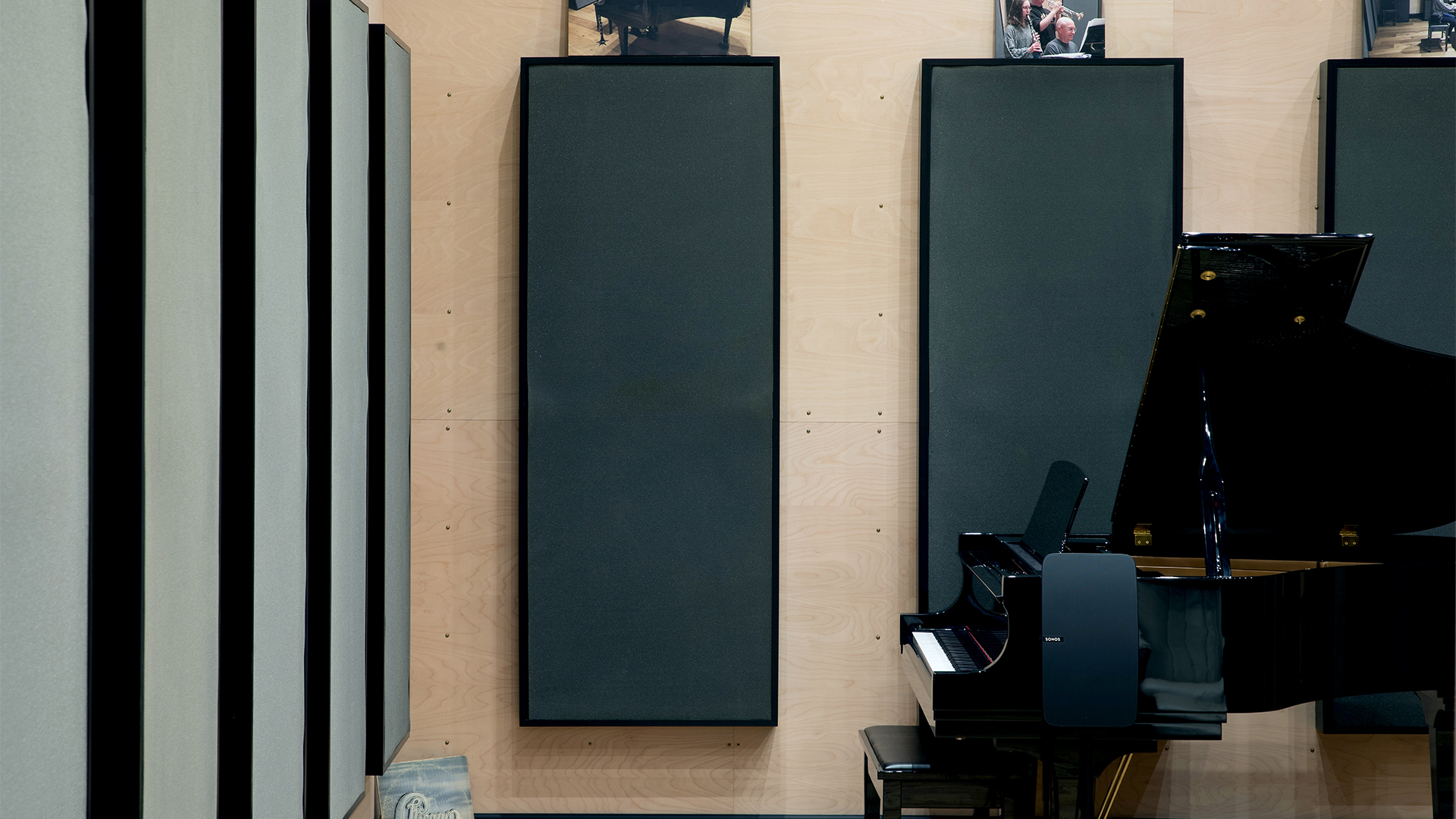
Ceiling Diffusion
A ceiling with the proper prime number, can sound like no ceiling at all. If you start with a 13′ ceiling as we did, diffusion will make it sound like 26′ away. Diffusion will add separation and definition to your presentation value especially when your speaker (piano) is pointed at it. It opens everything up and increases resolution by a factor of 2. The room will sound twice as large. There is improvement to be had by using diffusion on the walls. However, one must weigh the cost of diffusion with the benefit and make a decision. If there is a budget for diffusion on just one surface area, it must be the ceiling. Always use cherry wood for diffusers. We have tried all types and without exception, cherry wins hands down for middle frequency tone quality. What do you get when you design a piano room?
You get a piano room and a room for two channel playback. That was not the design paradigm. How did this happen? The answer is to be found in the basic requirements that both sound sources demand. When you have a room that has 90% of all the low frequencies managed, any sound source will sound good. Low frequency management using the CAW system in the floor, ceiling, and sidewalls makes both the piano usage and the two channel usage shine. Our proprietary foam technology manages the time signature of all the reflections within the room to obtain the proper Rt-60 times. It’s a process and we are still tuning. Diffusion rounds out the treatment process and the room sounds twice as large. To all you big rig guys. Notice the rig size. It is always quality and never quantity.
Products in this project
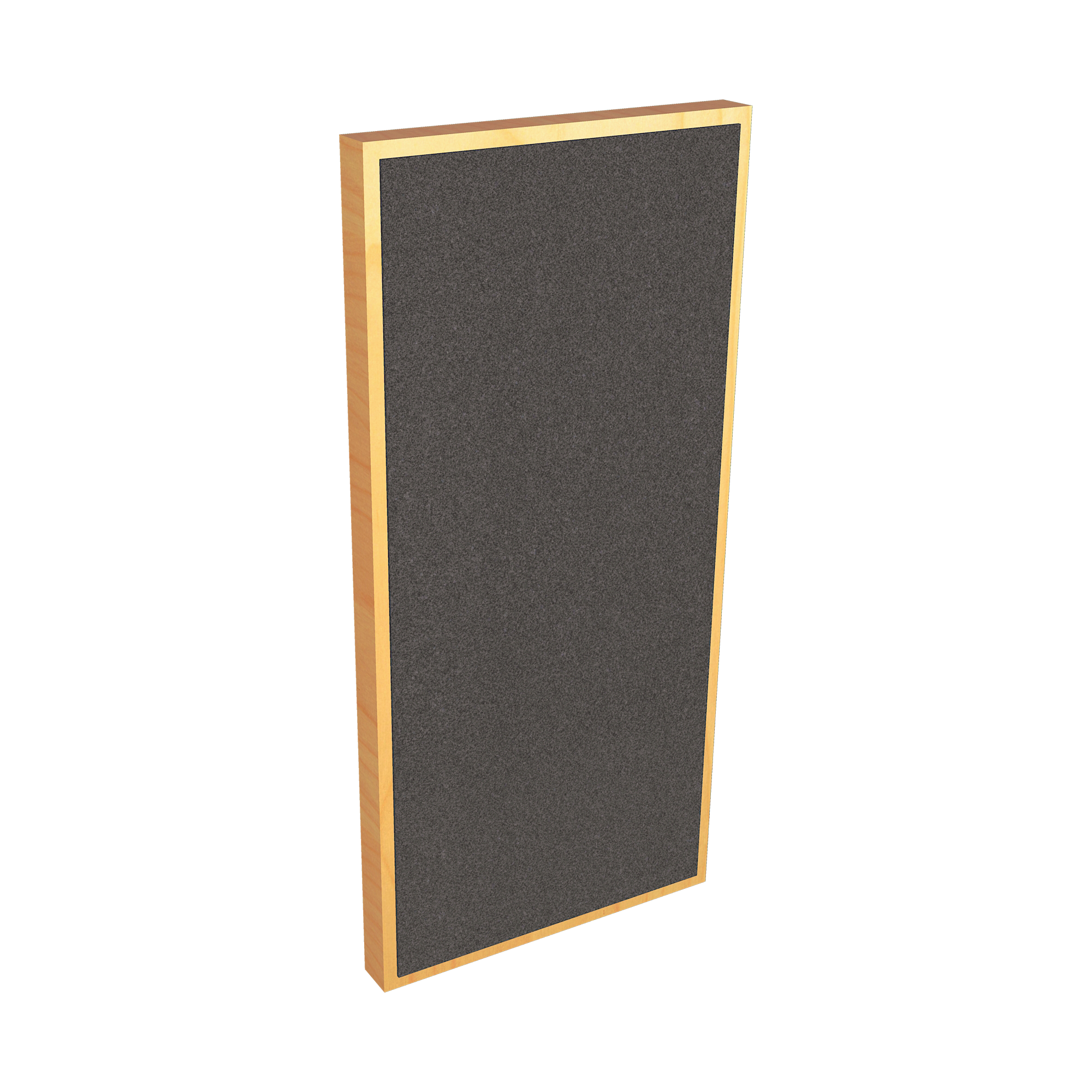
Foam Frame Panel
The most economical way to install our foam technology on your walls or ceiling is to use our foam and the mounts. This allows for airflow on both sides as the mount pushes the foam 2″ away from the surface to allow for air floor. Foam and mounts are designed to work together. Wood frame can be painted any color. Foam is grey only.
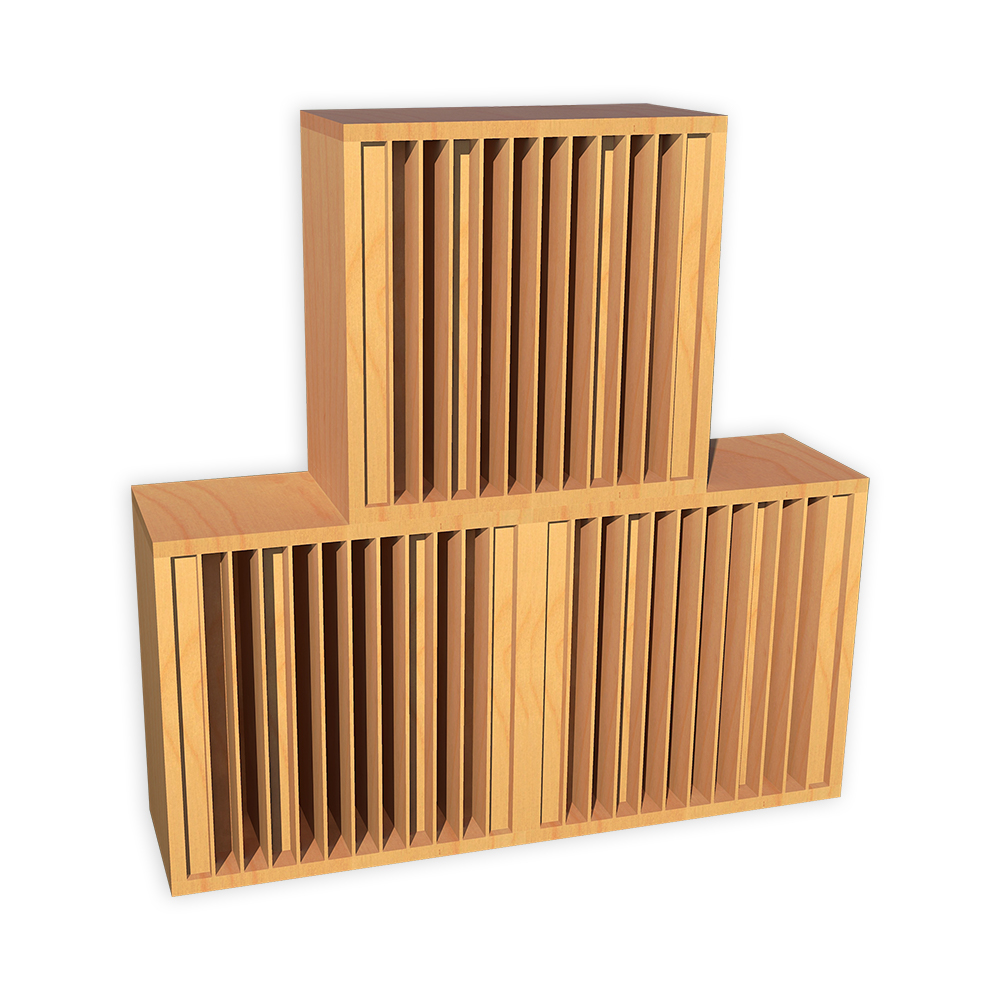
P-13 M | Modular Acoustic Diffuser
The P-13 M modules are based upon prime number 13 and are 24″ x 24″ x 12″. They can be positioned either horizontally or vertically or both creating a two dimensional diffused sound field if desired. The P-13 M units are built from cherry wood which is the finest wood choice for middle and high-frequency tone and timbre quality.
Carbon Absorber Wall (CAW)
Low frequency management in small rooms is all about the proper rate and level of absorption, the square footage of coverage, and the position of that coverage. We have two choices when it comes to low frequency management technology. We can use freestanding units that meet the absorption requirements and take up additional space which we don’t have in an already built room, or we can build the technology within the walls of a new structure by using our CAW (Carbon Absorption Wall).
CAW – Carbon Absorber Wall System
Do you want to solve your room acoustic problems?
There’s no one size fits all when it comes to room acoustics.
Get your FREE personal room acoustics analysis by chief acoustics engineer Dennis Foley.


